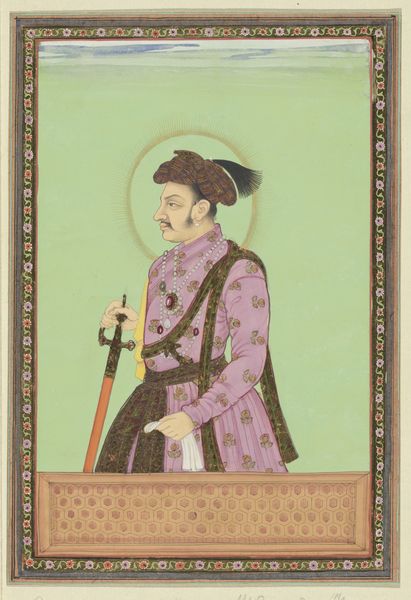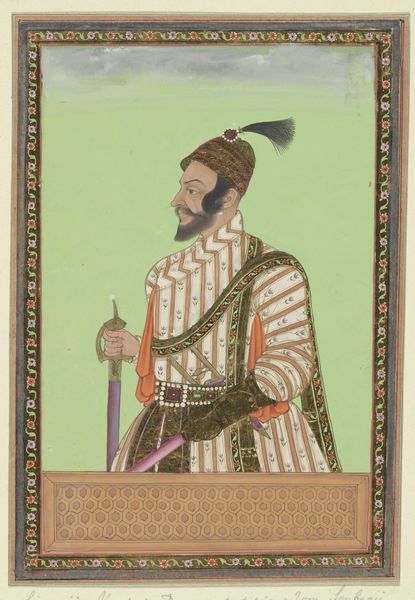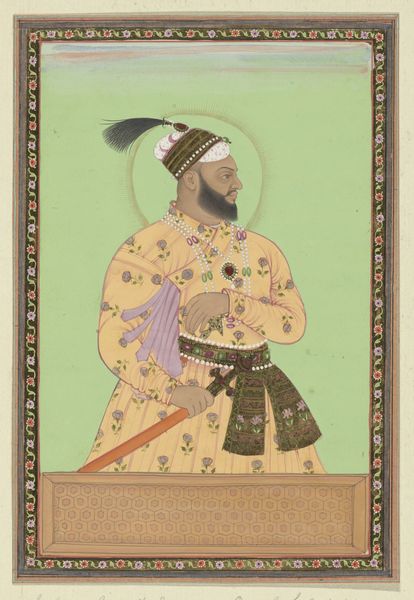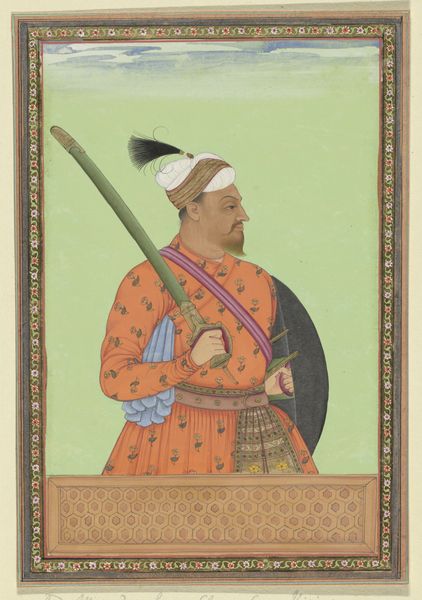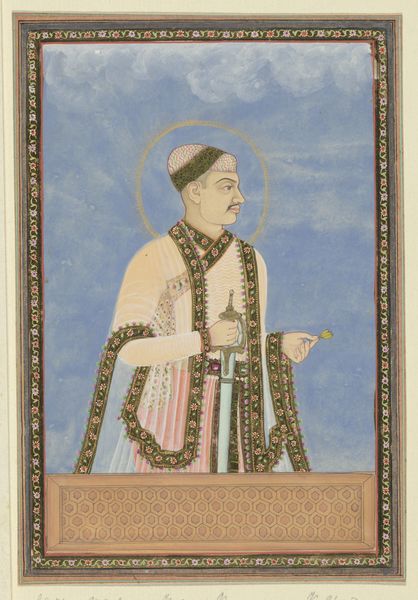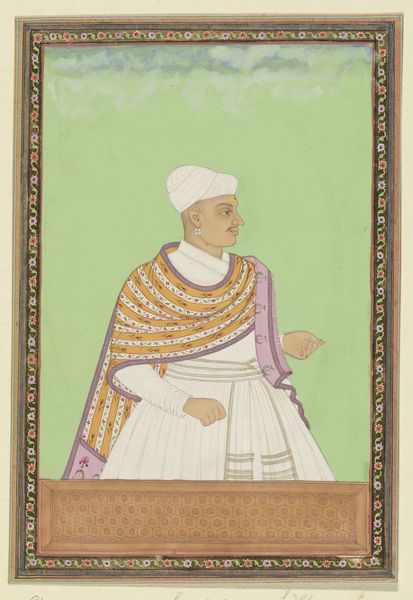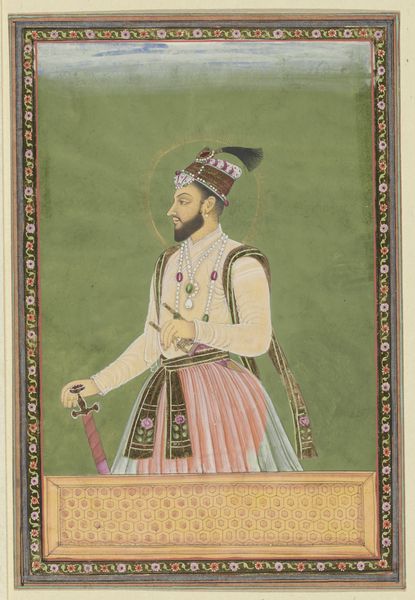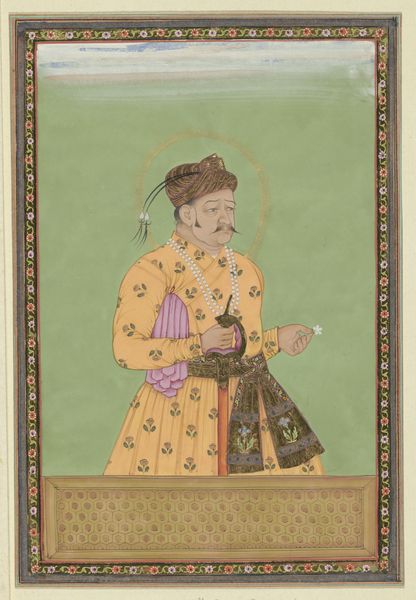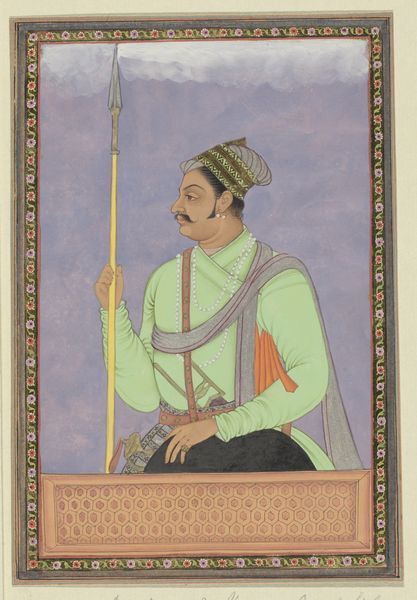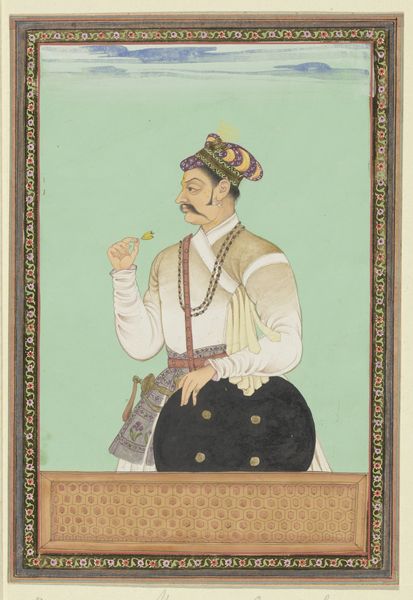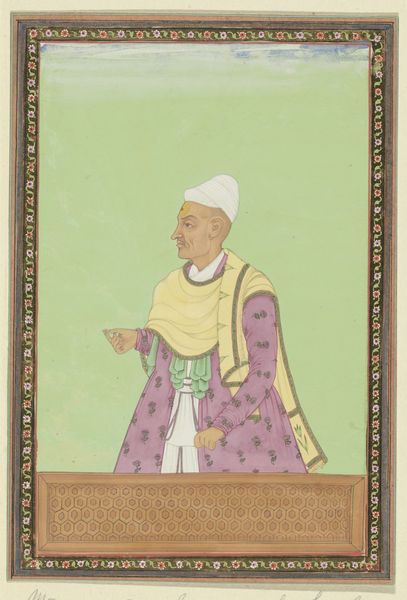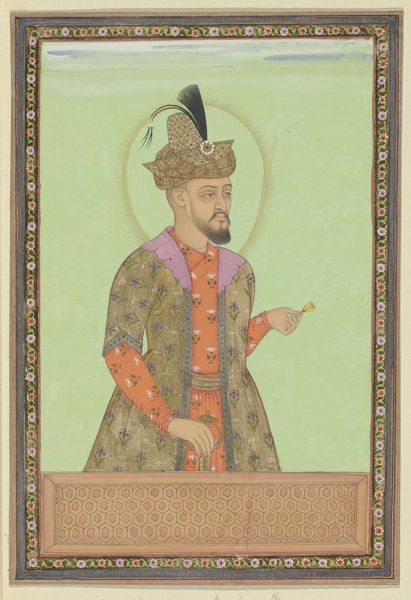
Portret van Musa Khan, die een page van Sultan Abdullah is geweest; na Neknam-Khan heeft hij gediend als legeraanvoerder van Karnatak c. 1686
0:00
0:00
painting, watercolor
#
portrait
#
water colours
#
painting
#
asian-art
#
watercolor
#
islamic-art
#
miniature
#
watercolor
Dimensions: height 203 mm, width 140 mm
Copyright: Rijks Museum: Open Domain
Editor: Here we have "Portret van Musa Khan, die een page van Sultan Abdullah is geweest; na Neknam-Khan heeft hij gediend als legeraanvoerder van Karnatak," circa 1686. It's an anonymous watercolor painting currently residing in the Rijksmuseum. There’s something about the flatness of the figure against that pastel background that really catches my eye. What historical narratives do you see at play here? Curator: It's a fascinating piece precisely because it offers insight into the social structures of the time, doesn't it? We see Musa Khan defined by his service – first as a page, then a military leader. This wasn’t simply a personal portrait; it was a statement of social standing, deeply embedded within the political landscape of the Karnatak region. Editor: So, it’s less about the individual and more about his role within those power structures? Curator: Exactly. Think about the patronage system. Who commissioned this? Why? Likely someone wanting to broadcast Musa Khan’s allegiance and perhaps even their own connection to his influence. How might the imagery contribute to constructing that message? The attire, the weapons, even the framing - each carefully considered to convey power. Editor: I hadn't considered the framing device itself as part of that communication. It feels almost like a stage. Curator: Precisely! Art in this period was performative; a visual stage setting to communicate social and political realities. Consider how such portraits functioned within the networks of power – who saw them, where were they displayed, and what messages were intended for those viewers? Editor: It definitely gives me a new perspective on these seemingly straightforward portraits. Thanks for elaborating on this context, seeing this now feels less like observing and more like eavesdropping. Curator: Indeed. The public role of art is rarely passive; instead it actively helps to construct the socio-political realities of its time, and we, in turn, learn a bit about that moment in history.
Comments
No comments
Be the first to comment and join the conversation on the ultimate creative platform.
